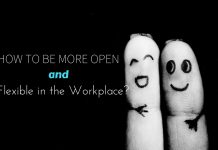There will come a time in every organization when change shall become a necessity and detrimental for the survival of the company.
An organization is what shall not consider any change which is destined to failure and will cease to exist eventually. Barriers to innovation and creativity could be identified and an innovation implementation plan in that case can definitely help.
In this post, we are going to discuss with you some of the barriers to change which are required in the workplace, how you can overcome them and what ways can you use to change the work culture of your company. Keep reading to find out!

Image source: datis
Potential Barriers to Change in the Workplace:
1. Lack of employees:
One of the most common potential barriers to change is lack of employees. Employees will always have the worry to change and unless they have been involved in the process of change, it is possible that even the one who is most loyal out of all employees will try to resist the change.
Some organizations also make the mistake of involving employees in the process of change. This does spike some fear of the unknown, having less desire to embrace a better culture and eventually a potential barrier to change.
A good way to solve the situation is by providing information that is relevant and sufficient resources so that they can make changes accordingly.
2. Potential barriers to change in the workplace:
Often the planning team does not have any clue that the change that is about to occur will affect others severely. It is true that at this point the state will only focus on planning basic stuff such as administrative structure, job responsibilities, work area requirements etc.
The team also often fails to make the right decisions based on intuitions and feelings. This could really overlook how some people feel and work and the barrier to change comes into existence.
There is also a solution to problems like these. You have to understand people in your organization and not treat the feelings of others as something insignificant. Only that can help you.
3. Organizations that don’t know anything about the current state:
Change is quite hard for those organizations that don’t have a clue about their current state. By trying to implement changes and see what can be done about it is good but most have any understanding about the current blueprint which could be a huge barrier to change.
Such entities often do not realize that being unable to analyze the present organization will cause the barrier to bring changes which they hope to implement. The only way you can get around this problem is by understanding the blueprint before any change is suggested. Once you have dealt with this, it will become easy to plan the future.
4. Complexity of the organization:
There does come a time when most organizations start using difficult and complex processes which makes the process of implementation and planning quite complex. The complexity does include complex processes, products and systems which will contribute to change barriers because they are quite difficult for all members of every organization to understand.
A natural way to solve this problem is break the barriers and introduce a skilful and keen approach which can help you tackle better growth as well as complexity. You really don’t want to try and implement any complex changes in the organization if it doesn’t have the maturity to take care of it.
Overcoming Barriers to Change in the Workplace:
1. Have a proper plan:
One of the biggest barriers to change that exist in most work places these days is lack of good planning. Therefore if you want to overcome this, it is highly important that you plan things out accordingly.
A good plan of action is very much needed. Put things down on a piece of paper. From what, when and why any other question you can imagine. Always remember that planning is important and that if you don’t plan, you might fail in overcoming the barrier. So keep that in mind always.
2. Trying way too much:
When you start, make sure you are starting off with something small. Even if it is small, you should keep doing and keep practicing often. If you would like to create that habit, the trick you can try is to do as little as you can every day. If you are what you are doing repeatedly, then some day you can surely overcome the changes at your workplace. Think of it in that way.
3. Focus on all the right things:
There are many people who waste their time at work by focusing on the wrong things. A simple change can be brought if you focus on what is important. Have regular meetings when you can discuss things like these.
4. Make your workers the hero:
By making the managers the hero, you can easily secure the buy in. The point is that by getting the managers to be the ones who have been implementing change and are giving them center stage, it is quite possible to get some participation from their side. By definition, most senior managers are capable, are ambitious and motivated. By making them the hero of change, the abilities could be harnessed to benefit the organization.
5. Painting alternatives:
By painting alternatives that are harsh, you will be able to decline the current market share as well as the repercussions or maybe layoffs along with the downsizing if the change in no way succeeds. That will make the seniors understand the other side of resistance. In that way, it could be persuaded to accept the realities of business behind the process of change.
6. Try to promote collaboration:
You should also try to avoid any last minute changes. Instead come up with a long term strategy that will focus on innovation and creativity. This will also allow the organization to maintain the edge of competitiveness, meet new changes that can help them grow and improve even more. This may also help the organization stay one step ahead.
Practical Barriers to Change in the Workplace:
Here are some practical barriers to change you might experience at work. Keep reading to find out!
1. Teams may always be different:
Areas within every business will work in several ways because they are needed for different elements of work. This also means that they will have personalities that are different, the pace of working shall be different and so will be the style of working.
The reactions shall also be different including the opinions about change. It doesn’t matter how much direction is given by leaders who are senior, if a team doesn’t believe in the change of business or the role, then the team will also drive the change which is needed in successfully implementing.
2. Engage staff can take better stance than disengaged staff:
When change occurs in any working environment, most managers will focus their attention on those that are less engaged. Studies have however shown that there are much more engaged staff which can have much higher levels of resistance. This is probably because they are quite happy with their current work and a event in change could mean a loss at work, the feeling of importance, the happiness and security in their job etc.
If the staff is disengaged, there are chances that a change will be seen as something fresh and news. They are disengaged already and change might improve this or keep the disengagement consistent.
3. Leadership is important:
If a few leaders and managers don’t believe or are not capable of handing the technical side of change, then what chance does the staff have in believing them as leaders and in the change also. The opinions of change from the perspective leadership must be communicated with staff but in one way that will let the staff know exactly what is about to happen, how they shall be supported through such changes and what positive could be for the staff once the changes have been made. If leaders are not able to show what changes look like for the staff, the resistance will naturally occur.
Identify Barriers to Change in the Workplace:
1. Speak to the important individuals:
Key individuals always have a very good understanding of a certain situation and do have the skills and knowledge which helps them to think about a certain topic and explore new kinds of ideas. You could want to consider speaking to a group of people through meetings on a regular basis. Talking to key individuals will surely help in identifying the several barriers of change in the workplace.
Some of the advantages that come with it include enabling ideas which are to be explored in an iterative fashion, information will be available in details, it will also be quick and inexpensive. Some disadvantages also fall under this category such as finding the right person and the requirement of additional corroboration.
2. Observe clinical practice in action:
Often the best and easy way of assessing the current clinical practise is by seeing the behaviours of the individuals at your work place and their interactions. This is appropriate if you have been looking at those events that happen often.
Now this method also comes with several advantages. Some of them include enabling a good analysis of the current behaviours, eliminating any biased behaviour, providing a good method for checking progress. The disadvantages include difficulty in gaining consent from people you would like to observe etc.
3. Have a focus group:
Having a focus group is quite helpful. It can definitely help you identify the barriers to change in the workplace. Focus groups are quite a powerful means of evaluating the current practise and the testing of new and simple ideas. It comes with a proper discussion of interviewing a group around six to ten people.
There are several advantages that come with this such as enabling a representative group of people who share their ideas, allowing a range of in depth information that is to be obtained, encouraging better and new ideas, helps people get engaged in the process of change, is quick and easy to perform.
Personal Barriers to Change in the Workplace:
1. Lack of leadership and focus:
One of the common personal barriers to change you can expect in the work place is having lack of leadership skills and lack of focus. Having a lack of leadership can be solved if you continue to inspire yourself or have a friend who will inspire you instead. Second is related to focus and project management which comes with no clear accountable and the inter dependencies between roles.
2. Barriers to change and innovation in the workplace:
Now that you have identified the problem at your workplace, how can you bring some innovation at your work place? Simple! What you can do is stimulate the minds of your employees.
Excite and nurture them so that creative thinking is produced more often. People should be free from all barriers which impede the ability to expand the potential within a grasp. A company must always promote an atmosphere where ideas are always valued, considered and implemented. This will also allow more vision and creativity in the workplace.
This brings the post to an end. Hopefully after reading this article, you have got a full and proper idea on what are the barriers which are needed to change at work and what you can do in order to overcome and resist them. If you have tried some of our tips and techniques, please let us know about it in the comment box below. We would love to hear from you. Also if you have a few questions in mind, drop them down too. On that note, good luck and take care.











































